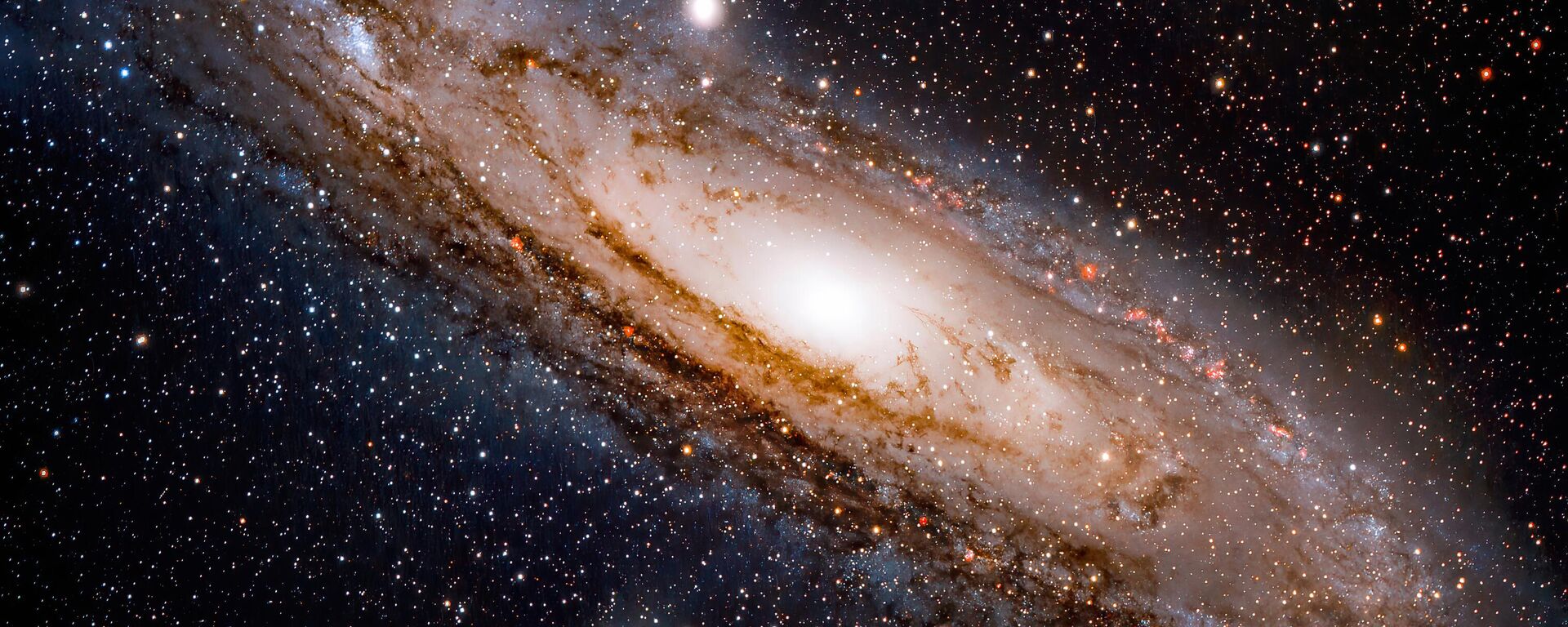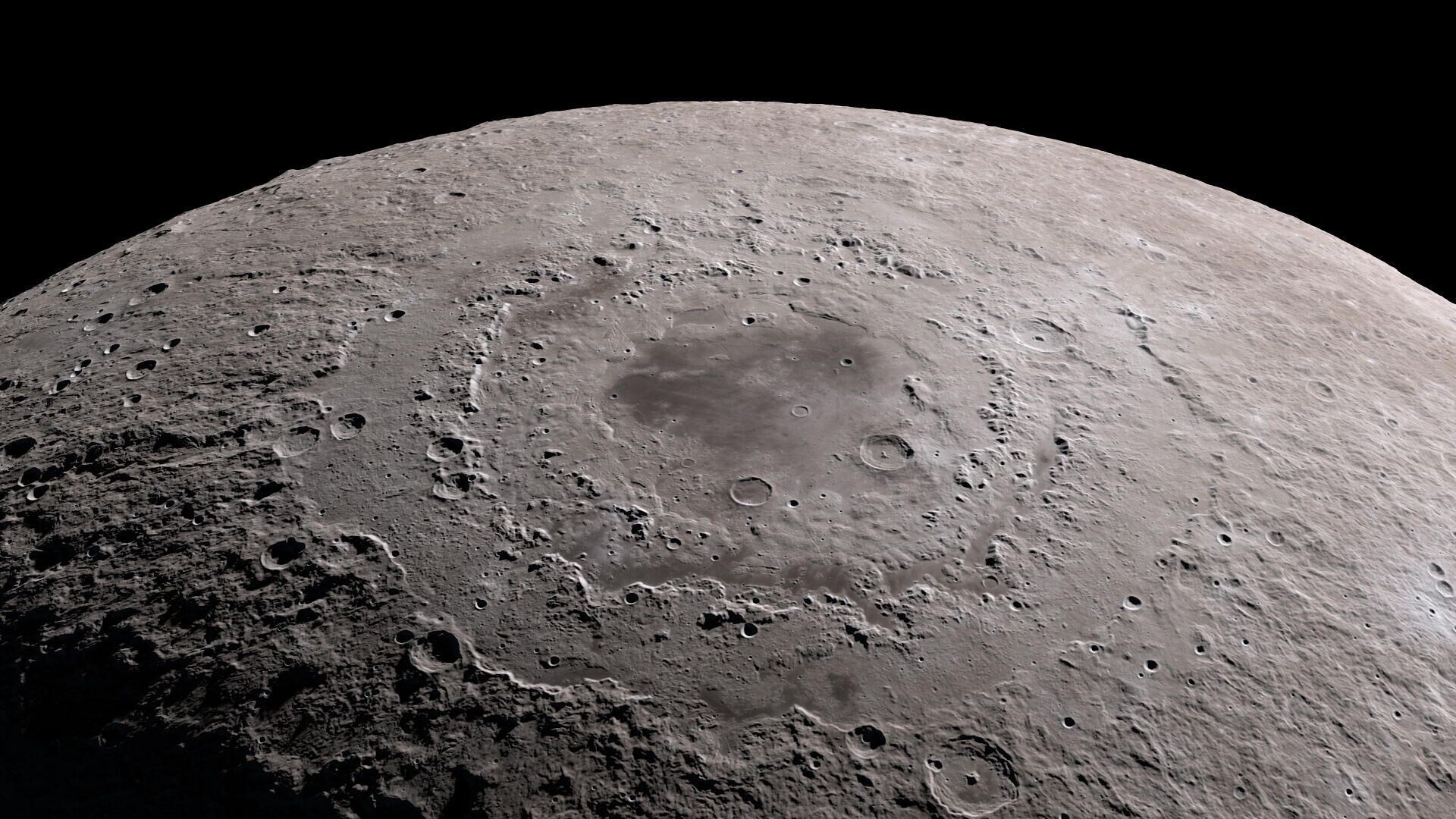https://sputnikglobe.com/20231013/scientists-reveal-magnetism-from-apollo-moon-rocks-natural-not-spacecraft-induced-1114156913.html
Scientists Reveal Magnetism From Apollo Moon Rocks Natural, Not Spacecraft-Induced
Scientists Reveal Magnetism From Apollo Moon Rocks Natural, Not Spacecraft-Induced
Sputnik International
Scientists revealed that the mysterious magnetism found in Apollo moon rocks is of natural origin, dispelling one of the major mysteries surrounding the moon's magnetic history.
2023-10-13T00:02+0000
2023-10-13T00:02+0000
2023-10-12T23:58+0000
beyond politics
science & tech
geophysical research letters
apollo
moon
moon mission
magnetic fields
magnetic field
https://cdn1.img.sputnikglobe.com/img/07e6/01/0f/1092276202_0:0:1920:1080_1920x0_80_0_0_7cfc44439ec79e6ecc5718c4b2944299.jpg
Scientists have revealed that the mysterious magnetism found in rocks retrieved during the Apollo moon missions are of natural origin and not a result of spacecraft-induced effects, effectively debunking one of the major challenges to the theory that the moon generates its own magnetic field.Officials made the findings after exposing eight rock samples from four Apollo missions to strong magnetic fields, simulating the conditions experienced during the return journey from the moon. The samples were then subjected to a field strength of 5 millitesla for two days, equivalent to about 100 times Earth's magnetic field strength. Remarkably, the researchers observed that the "magnetic contamination" could be easily removed using standard methods.The enigma of the moon's magnetism dates back to the 1980s when geophysicists studying moon rocks brought back from the Apollo missions detected strong magnetic fields embedded within the lunar samples. Given the moon's relatively small size, it seemed unlikely it could maintain such a magnetic field for over 1.5 billion years.Researchers had previously speculated that sources other than the moon itself, including the spacecraft used to transport the samples, may have caused this magnetization.The study's findings were published Wednesday in the journal Geophysical Research Letters.
https://sputnikglobe.com/20230906/astronomers-make-furthest-ever-measurement-of-galaxys-magnetic-field-1113161409.html
Sputnik International
feedback@sputniknews.com
+74956456601
MIA „Rossiya Segodnya“
2023
News
en_EN
Sputnik International
feedback@sputniknews.com
+74956456601
MIA „Rossiya Segodnya“
Sputnik International
feedback@sputniknews.com
+74956456601
MIA „Rossiya Segodnya“
apollo moon rocks, magnetism in apollo moon rocks, why moon has magnetism, moon's magnetism, moon magnetic field, earth's magnetic field strength, is apollo magnetism induced byspacecraft
apollo moon rocks, magnetism in apollo moon rocks, why moon has magnetism, moon's magnetism, moon magnetic field, earth's magnetic field strength, is apollo magnetism induced byspacecraft
Scientists Reveal Magnetism From Apollo Moon Rocks Natural, Not Spacecraft-Induced
Per NASA, a total of 842 pounds of lunar rock samples were brought back to Earth between 1969 and 1972 through six different Apollo missions. Analysis of the samples have contributed to various findings, including the revelation that the moon's crust formed some 4.4 billion years ago.
Scientists have revealed that the mysterious magnetism found in rocks retrieved during the Apollo moon missions are of natural origin and not a result of spacecraft-induced effects, effectively debunking one of the major challenges to the theory that the moon generates its own magnetic field.
Officials made the findings after exposing eight rock samples from four Apollo missions to strong magnetic fields, simulating the conditions experienced during the return journey from the moon.
The samples were then subjected to a field strength of 5 millitesla for two days, equivalent to about 100 times Earth's magnetic field strength. Remarkably, the researchers observed that the "magnetic contamination" could be easily removed using standard methods.
"You want to know that the spacecraft returning your sample is not magnetically frying your rock, essentially. We simulated a long-term exposure of a sample to a stronger magnetic field than what the Earth has... and found that for nearly all samples, including several we had previously studied in the context of lunar dynamo records, we could remove that contamination quite easily," said lead study author Sonia Tikoo, an assistant professor of geophysics at the Stanford Doerr School of Sustainability.
The enigma of the moon's magnetism dates back to the 1980s when geophysicists studying moon rocks brought back from the Apollo missions detected strong magnetic fields embedded within the lunar samples. Given the moon's relatively small size, it seemed unlikely it could maintain such a magnetic field for over 1.5 billion years.
Researchers had previously speculated that sources other than the moon itself, including the spacecraft used to transport the samples, may have caused this magnetization.

6 September 2023, 21:20 GMT
"As a global community, we’re starting to send more sample-return missions to other bodies, so it’s good to know that as long as we’re careful to ensure spacecraft fields are not too high – and it doesn’t have to be zero, necessarily – we can still do paleomagnetism studies along with other research," said Tikoo.
The study's findings were published Wednesday in the journal
Geophysical Research Letters.



